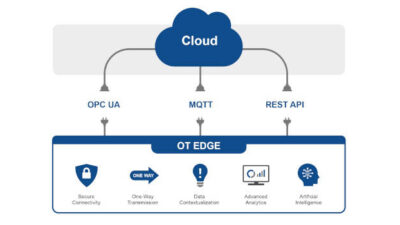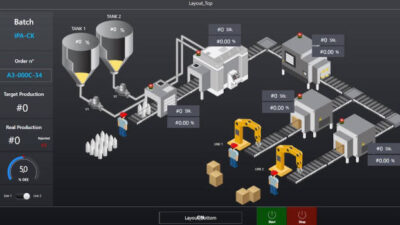For all the logic behind server virtualization—namely its ability to cut down on hardware costs—most people think of the technology's benefits as data center-oriented. Not so for Subaru of Indiana (SIA). The Lafayette, Ind.-based automotive manufacturer has cut hardware costs via virtualization, but the biggest impact has been the reduction in downtime of plant-floor systems, says J...
For all the logic behind server virtualization—namely its ability to cut down on hardware costs—most people think of the technology’s benefits as data center-oriented. Not so for Subaru of Indiana (SIA). The Lafayette, Ind.-based automotive manufacturer has cut hardware costs via virtualization, but the biggest impact has been the reduction in downtime of plant-floor systems, says Jamey Vester, a production control specialist for SIA.
“From a manufacturing standpoint, the uptime and reliability are our biggest benefits, simply because we need to keep our systems up and running as much as possible so we can continue to make cars,” Vester says. “Even a small reduction is significant for us.”
Bogomil Balkansky , product marketing director for VMware, says the flexibility of virtualization technology makes the process of provisioning a new system much faster.
Virtualization is a computing technology in which a layer of software allows multiple operating systems and applications to run on one physical machine. In the most common type of virtualization, the software that enables these “virtual machines” is called a hypervisor. A key benefit of virtualization is greater server utilization, but on manufacturing plant floors, virtualization can lead to higher production uptime thanks to the speed and flexibility of setting up virtual machines.
Before SIA’s foray into virtualization in 2004—using technology from VMware and partner Vizioncore in combination with clustering built into Microsoft ‘s Windows Server platform—annual downtime (most of it planned) was 28 hours a year. Since the virtualization project, downtime runs less than five hours per year, and just under two hours in 2006.
Vester says VMware’s ESX Server software enables SIA IT staff to create virtual machines that are identical images of key systems running on a handful of physical servers. The images allow SIA to quickly back up and test physical servers to reduce planned downtime without the costs of full physical clustering.
VMware’s software is used to support redundancy and clustering for its two main iFIX SCADA systems from GE Fanuc Automation , as well as a custom message-queuing application for plant data. Windows Server’s clustering utilities are used for administration, but Vester says VMware’s software and ESX Ranger from Vizioncore allow clustering without extra hardware such as Small Computer Systems Interface (SCSI) drives or a SAN spindle.
SIA also uses VMware to run iFIX clients—as well as some of GE Fanuc’s Proficy plant-management applications on virtual machines—rather than on dedicated PCs.
Vester says SIA phased in the virtualization, testing it first on less critical systems such as a print server, before rolling it out for SCADA. All told, virtualization has allowed SIA to consolidate 45 servers down to 15, while doing away with the several weeks of procurement and set-up procedures needed to install hardware.
In a February 2007 report, Cambridge, Mass.-based Forrester Research attributes rapid server virtualization adoption rates to the ability to reduce hardware costs while making IT infrastructures more flexible by encapsulating applications into virtual containers that can be moved between physical servers. Such containers are easy to copy and manipulate, says Bogomil Balkansky, product marketing director with VMware .
“Everything that’s running in a virtual machine is contained in one large file,” says Balkansky. “So if you need to provision a new system, that process is much faster.”
For SIA, this flexibility improved uptime for mission-critical systems. “Virtualization is reliable enough for plant-floor applications,” says Vester. “You just need to start slow and experiment.”



